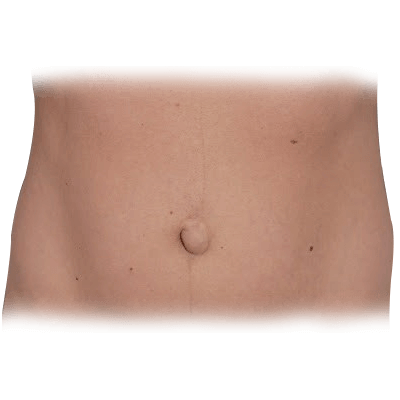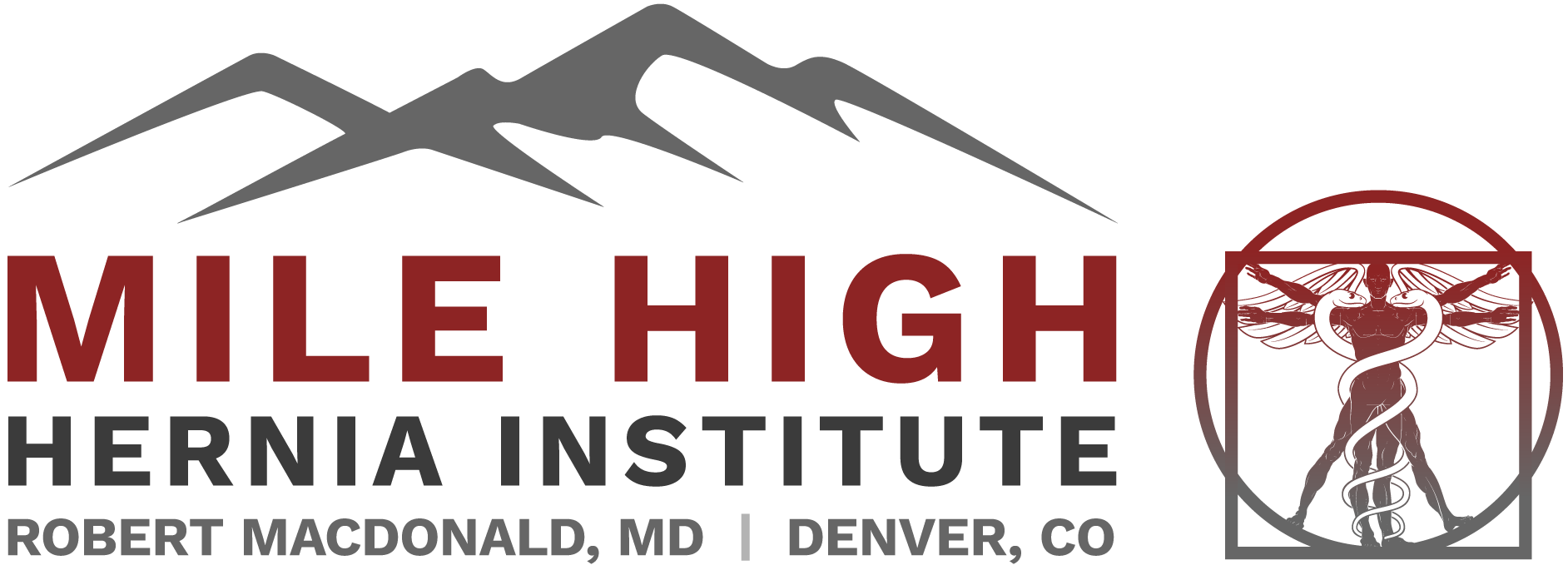Umbilical Hernia
Umbilical Hernia Surgery
Umbilical hernias are fairly common in adults. Like all hernias, an umbilical hernia represents a hole in the muscular abdominal wall, allowing contents behind the muscle to bulge through the defect. Small hernias(pictured) tend to contain intraabdominal fat, and are not dangerous, though they may be uncomfortable or unsightly. Larger hernias may contain the intestine. Many people are born with very small umbilical hernias(“outies”) that ultimately become noticeable in adulthood after they have become larger. Umbilical hernias are seen commonly in women with prior pregnancies, though they are common in men as well. Umbilical hernias may cause pain or discomfort around the belly button, frequently with activity or after meals. Most umbilical hernias get larger over time.

Symptoms of Umbilical Hernias
- Small hernias without symptoms can be watched if the patient chooses. Without surgery, there is a very small risk that some fat or part of the intestine will get stuck (incarcerated) in the hernia. Though rare, this may require emergency surgery.
- Small hernias are repaired through a small skin incision just beneath the hernia. Small hernias can often be repaired without mesh reinforcement, simply suturing the hole closed.
- If an umbilical hernia is large, or if the patient’s activities involve strenuous exercise or heavy lifting, it is often best to reinforce the hernia repair with mesh. Mesh is a small piece of synthetic material that strengthens the healing of the repair. The material also removes tension from the repair, leading to a lower risk of recurrence. The mesh incorporates itself safely and easily into the abdominal wall muscle providing strength and durability. Your surgeon should discuss all repair options with you during a consultation.
Fast & Effective Surgery
Umbilical hernia surgery generally takes less than 30 minutes to perform, and a short anesthetic is needed. Patients go home the same day and are back to work within a few days. Strenuous activity and abdominal exercises are limited for about one month after surgery to allow proper healing.
Complications, such as bruising or infection, are very rare but may occur. The risk of the hernia coming back is very low.
